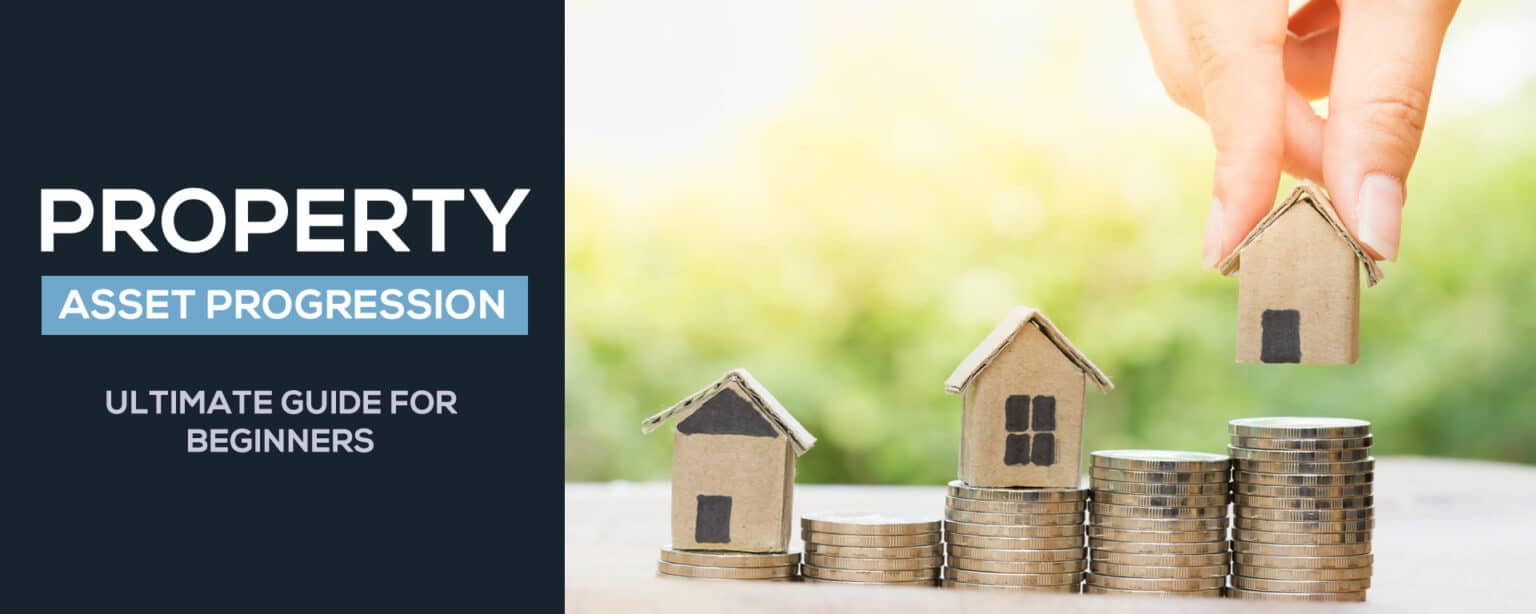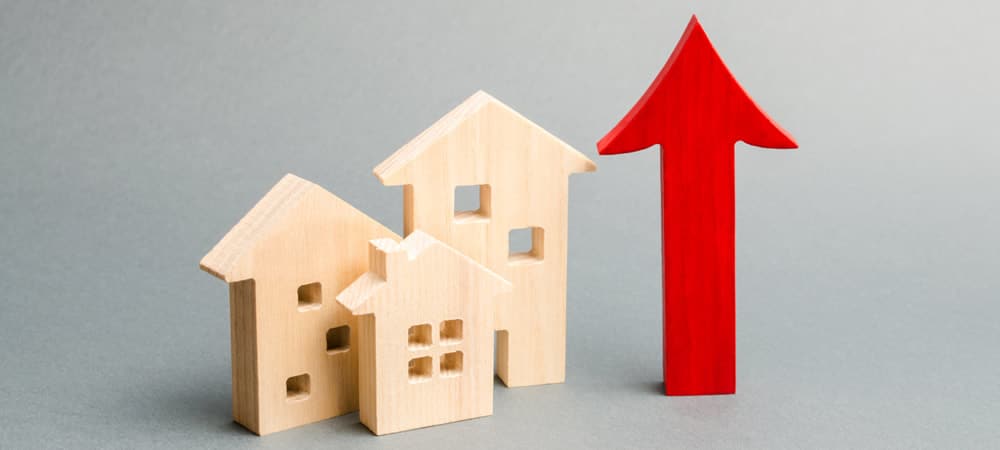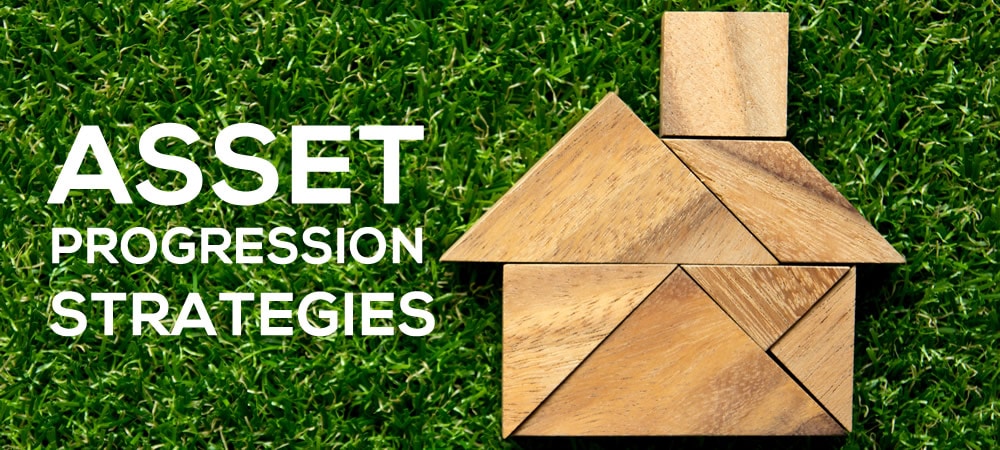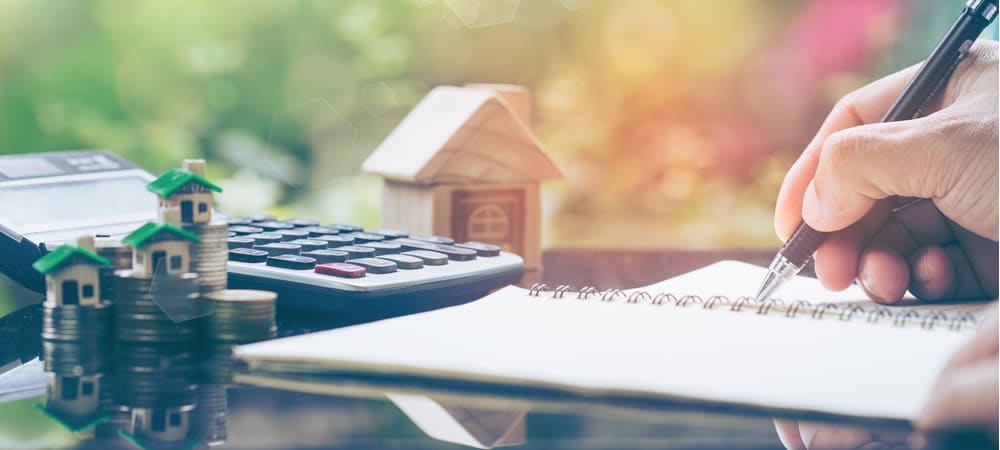
The Ultimate Singapore's Property Asset Progression for Beginners
There are lots of talks about investing in properties to grow wealth and build up a substantial nest egg for retirement. Some property agents even went as far as to say it is possible to upgrade one’s home without forking out extra cash.
Is this possible for every homeowner in Singapore? Are there clever moves that homeowners need to take before they can reap the the harvest that is promised?
Table of Contents
What is Property Asset Progression?
Property Asset Progression is a common term used to describe a property investment strategy that helps homeowners grow their property portfolio from a single HDB flat to multiple properties that can generate rental income or capital gain. It is also used to describe upgrading from one property asset class to another such as moving from an HDB flat to a private condo.
As the word “progression” rightfully suggests, it is a gradual asset growing process that takes time and considerable planning. Do not mistake this for a get-rich-quick-scheme that can fetch a sudden windfall overnight. Quite the opposite, the Property Asset Progression requires careful research and even years of strategizing.
For Property Asset Progression to be successful, the planning should start even before the acquisition of the first property. From picking the right property at each stage of the property investment cycle, calculating the CPF and cash outlay to maximising mortgage loan, homeowners have to implement the right strategy at the right time before they can reap the desired returns.
Adopting this form of investment deviates from the traditional view of “paying off our current property in full before buying the next for investment” and the risk-averse mindset of “always try to take as little loan as possible”.
Property Asset Progression advocates maximising loaned funds to generate higher returns, this alone will be a deal-breaker for many traditional property owners. Primarily, the Progression strategy recognises that the old method of buying and selling one single property at a time no longer works in this era.
In the later part of this article, we will discuss in greater details how the Property Asset Progression works and what are the strategies to adopt at different stages of a property cycle.

Benefits of Property Asset Progression
If the Progression strategies are executed correctly and on time, property owners can look forward to owning one or two fully paid private property by their retirement age. These owners can choose to sell these properties, downgrade to an HDB and enjoy a comfortable life for the rest of their living years or put the funds in a fixed deposit account to collect interest.
In some cases, property portfolios would comprise high rental yield properties that generate passive incomes even before the owners reach their retirement. This is fantastic news for those who are still trapped in the corporate rat-race because the recurring rental income will boost financial wealth, create positive changes in their living standard and even fund their children’s education.
Another upside of adopting the Property Asset Progression lies in the fact that such investment requires extremely low cash outlay. Purchasing a private property in Singapore uses only 5% cash, while the remaining 95% can be funded by CPF and bank loan.
Furthermore, unlike investing in asset classes such as stocks and gold, banks are more than happy to issue a mortgage loan to fund a property investment. Simply put, property buyers can invest using someone else’s money even without dipping into their savings!
Do you have a Property Asset Progression Plan?

Why Choose Property for Investment ?
As Christopher Tan, Chief Executive Officer of Providend puts it, “Real estate is an asset class that can give both income and capital growth. It also hedges against inflation.”
Just how resilient is Singapore’s property market? Even as Singapore is hit with the Covid-19 pandemic that has brought the country’s economy into a downward spiral, the property market showed no sign of decline 1 year on from the start of the pandemic.
Both private property and HDB price indexes continue to see upward trends – a clear indication that buyers are still confident of local properties and the market remains resilient despite unprecedented global uncertainties.
Reportedly, even travel bans are not holding back foreign property buyers. Foreign buyers are opting for virtual viewings and purchasing private properties despite not getting a chance to see the physical space.
The most important message here is that never be over leveraged. Speak to a professional to help you plan your finances.
Private Property Price Index
| Private Property Index* | 2020 Q3 | 2020 Q2 | 2020 Q1 | 2019 Q4 | 2019 Q3 |
|---|---|---|---|---|---|
| Price index | 153.8 | 152.6 | 152.1 | 153.3 | 152.8 |
*Data Source: URA 20-Q3 PR, URA 20-Q2 PR, URA 20-Q1 PR
HDB Resale Property Price Index
| HDB Resale Price Index* | 2020 Q3 | 2020 Q2 | 2020 Q1 | 2019 Q4 | 2019 Q3 |
|---|---|---|---|---|---|
| Price index | 133.9 | 131.9 | 131.5 | 131.5 | 130.9 |
*Data Source: HDB – Resale Price Index (RPI)

Property, A Safe Asset Class
A quick review of Singapore property prices over the past two decades revealed a significant jump of the index from 40.9 in 1990 to over 152 in early 2020.
Despite a series of 6 cooling measures implemented since 2009 to ensure the sustainability of property prices, the property market remains vibrant with continuous streams of local and foreign buyers in the past decades.
Unlike stocks and commodity investment that experience sudden fluctuation of prices even with the slightest shakeup in the economy, Singapore property is a safe asset class that has stood the test of times. Prices have remained upbeat through global financial crises, global pandemics, and even the current economic downturn.
Data Source: Data.gov.sg
Factors That Are Driving the Prices and Demands
Land scarcity is one of the key factors that is driving the prices and demand for local properties. Even though Singapore had managed to grow through land reclamation, the government’s mandate for rapid urbanization requires far more land to meet the demand.
Furthermore, with Singapore’s total population is projected to reach between 6.5 million and 6.9 million by 2030, the demand for residential properties is likely to surge and impact positively on their prices.
Singapore’s world-class infrastructure, financial security and strong economic growth are also attracting global foreign talents and multinational corporations that will continue to drive property demand and growth.
For those who are looking for a safe asset class to invest, the property sector may present some opportunities that can see long-term yield. Just look at friends or family members around us – many of them would have benefited financially when they sold their BTO flats or Executive Condos and went on to upgrade to a private property of their choice that presented even more capital appreciation for building wealth.
While the chance to ‘flip a property’ and make a quick buck may no longer be as easy in Singapore, property is still a good asset class that can generate wealth. With careful planning and strategising, there are still ample opportunities to make decent recurring rental for passive income and capital gains.
Do you have a Property Asset Progression Plan?

What Are the Potential Pitfalls of Adopting the Property Asset Progression?
There are always risks and opportunities to different methods of accumulating wealth. The crux of the matter lies in understanding how to apply the right strategies and utilising the appropriate leverage before diving all in.
If buyers want to benefit from Property Asset Progression, wise planning and consultation with a qualified agent who is well versed with the subject will make a world of difference. While it is not rocket science, there are essential steps that require careful consideration too.
Here are some potential pitfalls that buyers would want to avoid:
Pitfall #1 - Adopting the Wrong Strategy
Property Asset Progression is about a systematic process of acquiring the right properties that can help buyers progress to the next level of upgrade and eventually achieve financial freedom. Skipping any step or blindly adopting a strategy that they are not ready for can spell trouble or even bring them back to the starting line.
For example, a young couple who is a first-time property buyer will stand to gain more from buying a BTO flat than a private property with a high rental yield. The couple can benefit from HDB grant of up to $80,000 and the profit generated from selling a BTO flat after the minimum occupancy period (MOP) can be as high as six figures. The savings and capital gain are considerable sums of money that can help the couple progress comfortably to the next level of upgrade.
Pitfall #2 - Not Doing Enough Research
It is not about finding the cheapest unit but one that can offer the best capital appreciation when it is time to sell. For Property Asset Progression to work, buyers must do sufficient research to understand how the estate development and the surrounding infrastructure will impact the capital gain over the next few years.
Emotional impulses can often hinder this part of the process because some buyers can be easily swayed by impressive decors or fancy add-ons and end up with a property with high entry price or low capital appreciation.
Not having a clear understanding of the market and a sound financial plan to start with can be detrimental to the property portfolio down the road too.
Pitfall #3 - Entering the Market too Late
“Timing the market” is one of the common phrases used in property talks but it is not necessarily the best tactic for Property Asset Progression because some buyers tend to wait too long and completely miss the boat when the best opportunity is presented to them.
Additionally, age plays a huge part when it comes to calculating the Loan-To-Value (LTV) ratio in Singapore. Delaying market entry can significantly affect the chance of obtaining a maximum mortgage loan from the bank too.
As part of the cooling measure in 2018, the maximum loan tenure for housing loans is capped at 30 years for HDB flats and 35 years for private properties. However, if the loan tenure plus the borrower’s age exceed 65 years, a lower LTV limit will apply.
For example, when purchasing a private property with a 30-year loan tenure, a 30-year-old borrower can maximise its LTV limit to 75% while a 45-year-old borrower can only enjoy 55% LVT limit. Simply put, the later a buyer enters the property market, the tougher it is to receive healthy financing from banks.
Do you have a Property Asset Progression Plan?

How to Apply The Property Asset Progression Strategies?
There are different ways to go about Property Asset Progression because every property owner is at a different stage of their journey. Instead of adopting a “one-size-fits-all” strategy, buyers must first identify which stage of the property journey they are on and proceed to the next upgrade progressively.
Stage 1 - Young Couple, First-time Property Buyer
Young couples who are buying their first property buyers are in the first stage. They will be focused on saving enough funds to purchase a property with high capital appreciation that will eventually bring them a healthy profit when the property is sold.
BTO flats are ideal property at this stage because they are the most affordable property types for young couples who may not have deep pockets. They can also off-set the property price with HDB grant, which can result in significant savings and reduction of the mortgage loan.
Case Study – Purchase a BTO Flat
Below is a table that captures the selling prices of newly launched BTO flats in November 2020:
//
Let’s assume that a couple with a household income of $6,500 has decided to purchase a 5-room BTO flat in a non-mature estate at $350,000. Based on their household income, they are eligible to apply for $30,000 of Enhanced CPF Housing Grant (EHG), hence reducing nearly 10% of the initial property price.
By the time the couple fulfil the five-year MOPs, the BTO value would have gone up and the couple may even fully pay off their mortgage loan. By selling the flat, the couple can easily reap a 6-figure profit that can help them upgrade to the next level of upgrade.
Important Criteria for Selecting the First Property in Property Asset Progression
- Affordability – The first property should be purchased within the couple’s financial means and without overleveraging financial loans. A detailed financial plan will give clarity to how much combined cash and CPF they have and the monthly mortgage repayment they can afford.
- High capital appreciation – The property should have qualities that will continue to boost capital appreciation and be able to generate good returns when it is sold after the 5-year MOP.
- Suitability – The property should have qualities that are aligned to buyers goals and plans for (at least) the next 5 years. This consideration should factor in the possibility for family expansion or lifestyle changes.
Stage 2 - Young Couple Sells the BTO Flat and Upgrade to an EC or Condo
At this stage, couples are ready to sell their BTO flats after fulfilling the MOP and utilise the capital gain to upgrade to the next asset class. They will be focused on selling the BTO flat and upgrading to an EC or condo that is more spacious or enhances their lifestyle.
Like stage 1, property buyers should concentrate on finding properties with high capital appreciation. If the Property Asset Progression plan is executed effectively at this stage, buyers can look forward to making another round of capital gain from their EC or condo. This will set them in motion for the next level of upgrade where each couple can own two properties instead of one!
Case Study – Upgrade From a BTO Flat To an EC
The case study below will present a simple calculation of how buyers can upgrade from a BTO flat to an EC at this stage:
The couple mentioned in Stage 1 managed to sell their BTO flat after the MOP for $300,000 profit and they also saved $50,000 in combined CPF (Ordinary Account) while staying in the flat for 5 years. If the couple decides to upgrade to an EC priced at $900,000, the estimated calculation would look like this :
The remaining funds that are available after paying off the downpayment should be set aside as contingency funds in case the couple experience a job loss or other unforeseen events.
- Property Price: $900,000
- Total Cash and CPF available: $350,000
- Less 25% Downpayment + Buyers Stamp Duty (BSD): $246,600
- Remaining Funds: $103,400
- Estimated Monthly Mortgage*: $2,500
*Estimated monthly mortgage using an online mortgage calculator.
When the couple sells this property, they will get to enjoy another round of capital gain that will finally prepare them for the next level of upgrade where they will get to own more than one property and generate recurring passive income.
Important Factors to Consider When Buying an EC or Condo at Stage 2
- High capital appreciation – The property should have qualities that will continue to boost capital appreciation and be able to generate good returns when it is sold in 3 to 5 years.
- Development in the estate – Select a property in an estate with foreseeable development plans and upgrades. This can come in the form of improvement in transportation, infrastructure or other forms of neighbourhood upgrades that will boost the value of the property.
- Financially sustainable – Despite making a healthy profit from the first property, couples should continue to be price conscious when selecting the next property. The EC or condo should be affordable in the next 3 to 5 years and it should factor in some reserve funds in case of job loss or unforeseen circumstances.
- Family planning – At this stage, many couples would already have children, be ready to have children or require to plan for their children’s education. Therefore, it is important to have a clear projection of the desired family life before committing to buying a unit. For example, if the location of the school is a pain point, buyers should factor in this concern when shortlisting the new property.
Stage 3 - Couple Sells the Condo and Proceed to Multiply Their Property Portfolio
At stage 3, couples who have adhered to the guidelines of stage 1 and 2 can finally multiple their property portfolio. The homeowners can sell the EC which they have purchased at stage 2 to make another round of capital gain and use it to fund two private properties.
Bear in mind that at this stage, the couple will own a property each instead of co-owning both of them. Such an arrangement eliminates the need to pay Additional Buyer’s Stamp Duties (ABSD)* levied on buying a second property and lessen the impact of LTV ratio.
The goal at this stage is to allocate one unit for rent and another for living in. Technically, the mortgage loan of the rented unit is paid off by the tenant, leaving the couple to only finance their live-in unit. When this stage is executed correctly, it can usually pave the way for expanding the property portfolio and multiplying more income-generating properties at later years.
*Singapore Citizens buying their second and subsequent properties are liable to pay 12% to 15% ABSD, while Singapore PRs, foreigners and entities have to pay 5% to 25%.
How to Multiply Property Portfolio?
Assuming that a couple successfully progressed from stage 2 to stage 3 and they are ready to sell their EC and begin the journey of multiplying their property portfolio to two units, these are steps that they can take:
- Allocate enough funds to pay for 25% down payment and BSD of the first private condo for living in. Only one spouse should have ownership of the unit.
- Allocate funds to pay for 25% down payment and BSD of the second private condo for rent. This unit will usually be smaller than the one allocated for living in but it should have qualities for generating generous rental income. Only one spouse should have ownership of the unit.
- If this stage is executed correctly, the second property can generate enough rent to cover the mortgage loan and even supplement that of the first property.
From this point, the property owners can decide their next step depending on their risk appetite and financial ability. They can choose to remain status quo until the properties are fully paid, sell the unit/s when there is substantial capital gain.
Important Factors to Consider at Stage 3
- Meticulous financial planning – This stage requires careful financial planning and research to derive a realistic action plan that is based on the couple’s income and goals. Because this stage requires meticulous calculation and transactions that can make or break the desired outcome, buyers should always seek the help of professional agents who are experienced in Property Asset Progression for assistance.
- Increased financial commitment – Ownership of two properties naturally points to a higher financial commitment, this is why careful financial planning is essential at this stage. While this is not the time to throw in the towel out of fear, it is also not advisable to over-commit.
Stage 4 - Retired Couple with Wealth Generating Property Portfolio
When property owners enter this stage, they are most likely to own a portfolio of wealth-generating properties. Alternatively, they would have made choices earlier to put them in a financially favourable position.
Here are some possible scenarios for property owners who have reached this stage:
- Owned one or two fully paid private properties that will continue to generate rental income or enjoy capital appreciation.
- Sell off a lucrative property unit and use the sales proceeds to enjoy the lifestyle of their choice.
- Sell off the property units and downgrade to a simpler unit while enjoying the financial freedom with the sales proceeds.
- Rent out all the units for recurring income while travelling the world or have an option to live in another country of their choice.
These are surely top choices for anyone who has reached the age of retirement! If property buyers can keep an open mind about the Property Asset Progression and take time to plan and strategise their property moves, there is certainly a lot to be gained.

Are You Ready for Property Asset Progression?
Property Asset Progression is another way of building wealth but unlike trading stocks or playing a game of chance, it requires careful research, planning and years of strategising.
Is it worth the trouble? The beauty is in the eye of the beholder. If regaining financial freedom and having comfortable retirement funds excite you, the Progression strategy could be an option that not only offers the lifestyle of your choice but also rewards your loved ones in the years to come.
A word of caution: Property Asset Progression requires meticulous planning and financial commitment. If the different stages and strategies are too overwhelming for you, Real Estate Professionals at Prop.sg are ready to offer professional guidance and share market experience to help clarify your doubts.